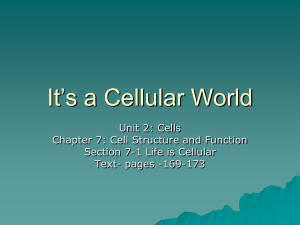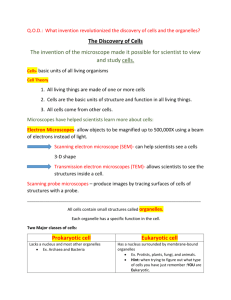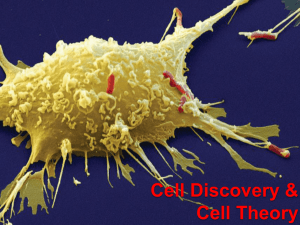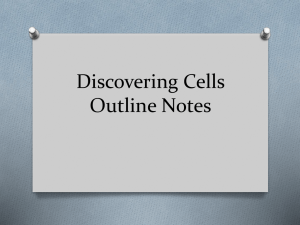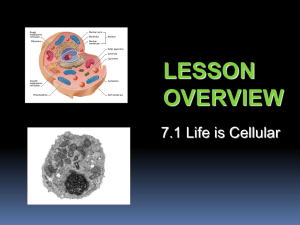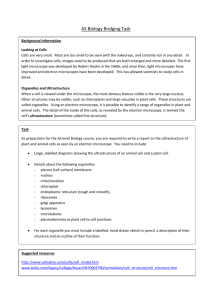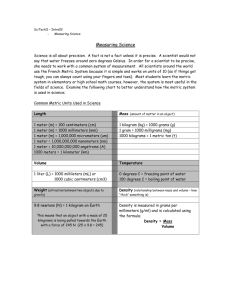7.1 wkbk - OG
advertisement
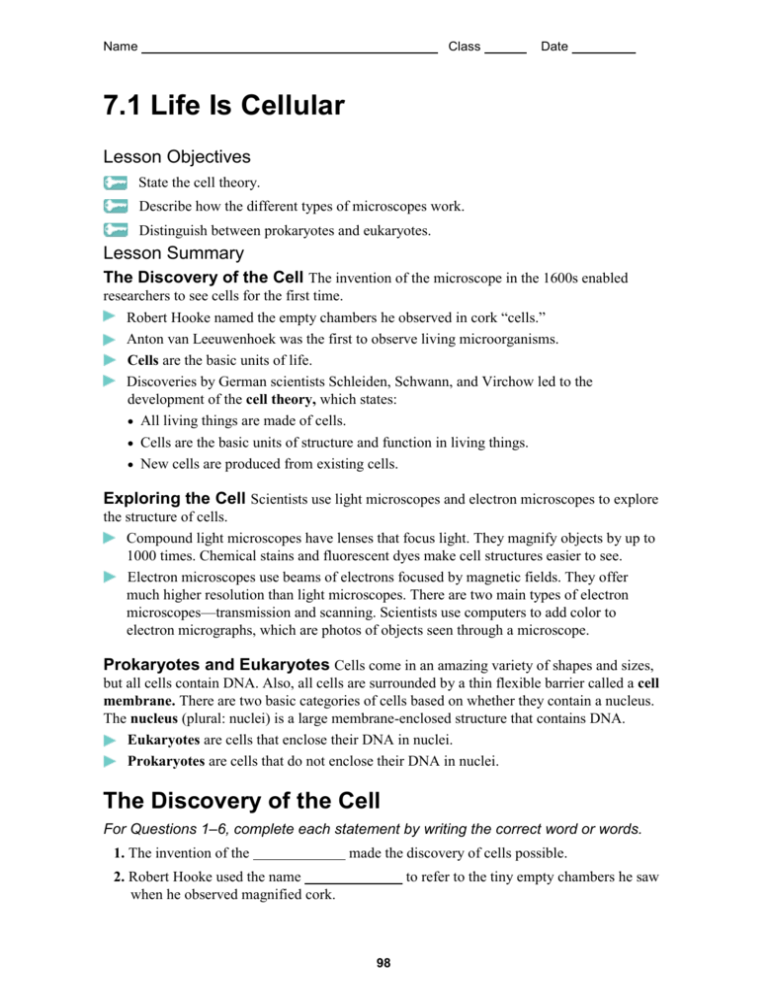
Name Class Date 7.1 Life Is Cellular Lesson Objectives State the cell theory. Describe how the different types of microscopes work. Distinguish between prokaryotes and eukaryotes. Lesson Summary The Discovery of the Cell The invention of the microscope in the 1600s enabled researchers to see cells for the first time. Robert Hooke named the empty chambers he observed in cork “cells.” Anton van Leeuwenhoek was the first to observe living microorganisms. Cells are the basic units of life. Discoveries by German scientists Schleiden, Schwann, and Virchow led to the development of the cell theory, which states: All living things are made of cells. Cells are the basic units of structure and function in living things. New cells are produced from existing cells. Exploring the Cell Scientists use light microscopes and electron microscopes to explore the structure of cells. Compound light microscopes have lenses that focus light. They magnify objects by up to 1000 times. Chemical stains and fluorescent dyes make cell structures easier to see. Electron microscopes use beams of electrons focused by magnetic fields. They offer much higher resolution than light microscopes. There are two main types of electron microscopes—transmission and scanning. Scientists use computers to add color to electron micrographs, which are photos of objects seen through a microscope. Prokaryotes and Eukaryotes Cells come in an amazing variety of shapes and sizes, but all cells contain DNA. Also, all cells are surrounded by a thin flexible barrier called a cell membrane. There are two basic categories of cells based on whether they contain a nucleus. The nucleus (plural: nuclei) is a large membrane-enclosed structure that contains DNA. Eukaryotes are cells that enclose their DNA in nuclei. Prokaryotes are cells that do not enclose their DNA in nuclei. The Discovery of the Cell For Questions 1–6, complete each statement by writing the correct word or words. 1. The invention of the made the discovery of cells possible. 2. Robert Hooke used the name when he observed magnified cork. to refer to the tiny empty chambers he saw 98 Name Class Date 3. German botanist Matthias Schleiden concluded that are made of cells. 4. German biologist Theodor Schwann concluded that are made of cells. 5. Rudolph Virchow concluded that new cells are produced from 6. The . combines the conclusions made by Schleiden, Schwann, and Virchow. Exploring the Cell For Questions 7–9, write True if the statement is true. If the statement is false, change the underlined word or words to make the statement true. 7. The size of the image formed by a light microscope is unlimited because light that passes through matter is diffracted. 8. Fluorescent dyes help scientists see the movement of compounds and structures in living cells. 9. Transmission electron microscopes form a 3-D image of the surface of a specimen. 10. THINK VISUALLY In the second row of the table, draw diagrams to show how a sample of three yeast cells would look in the types of micrographs indicated in the top row of the table. Then, in the third row, describe how each image would be formed. A Comparison of Detail in Basic Types of Micrographs Light Micrograph (LM 500x) A light microscope image is formed by Transmission Electron Micrograph Scanning Electron Micrograph (TEM 4375x) (SEM 3750x) A transmission electron microscope image is formed by A scanning electron microscope image is formed by a . . 99 . Name Class Date 11. To study cells with a light microscope, different types of stains are usually available. Why is it generally more useful to stain eukaryotic cells than prokaryotic cells? Prokaryotes and Eukaryotes 12. Complete the table about the two categories of cells. Two Categories of Cells Category Definition Size range Examples Prokaryotic cells Eukaryotic cells 13. Which category of cells—prokaryotic or eukaryotic—is your body composed of? Apply the Big idea 14. Recall that in science, a theory is a well-tested explanation that unifies a broad range of observations and hypotheses and enables scientists to make accurate predictions about new situations. How does the cell theory demonstrate this definition of theory? 100



